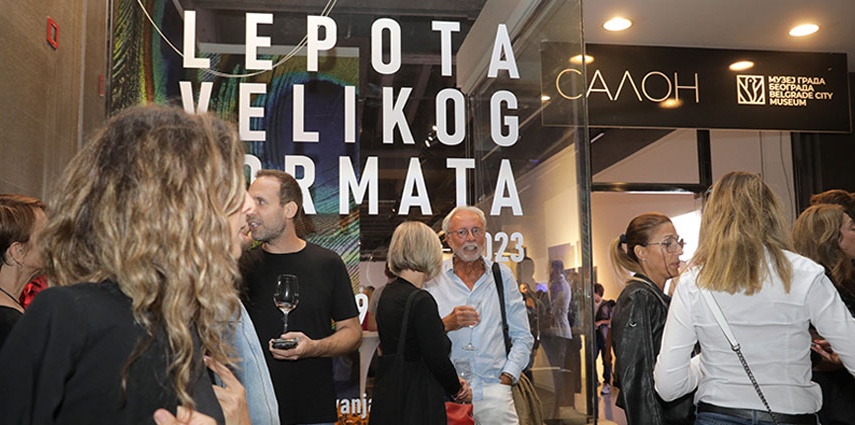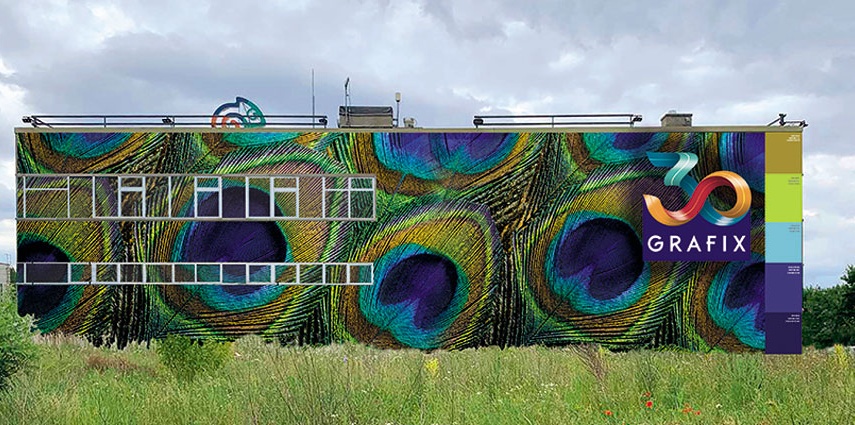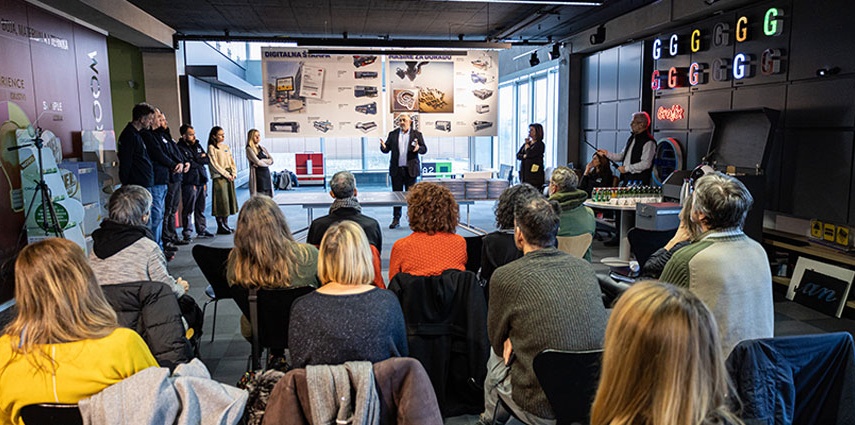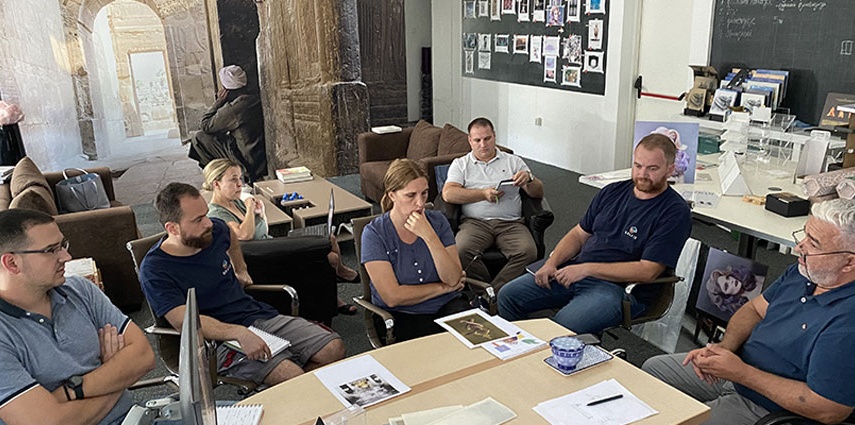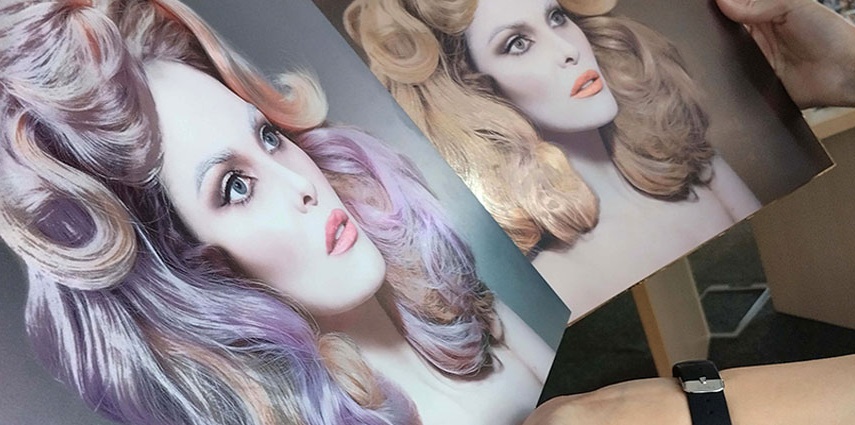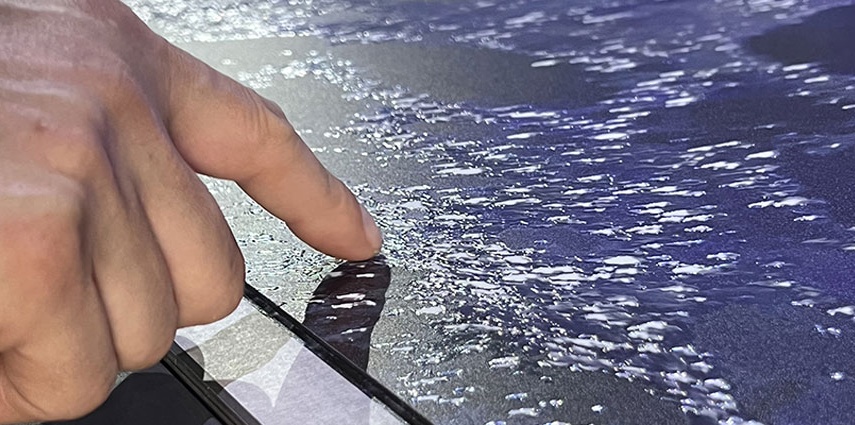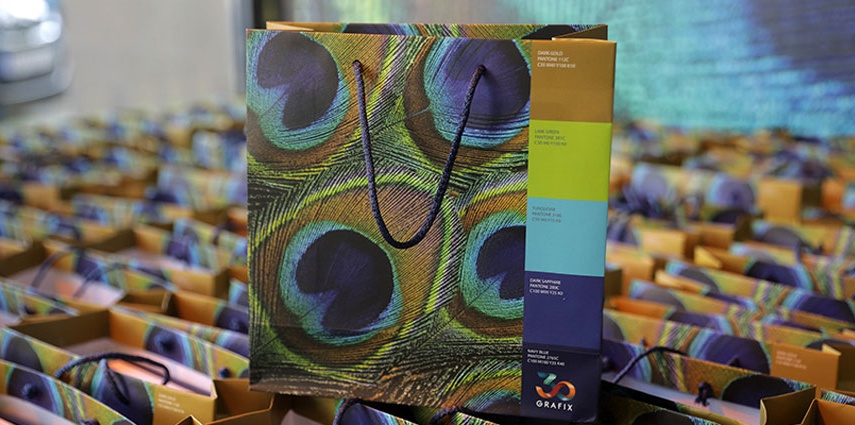The exhibition featured 20 works by contemporary artists, each of whom had their own moment to sign their piece — the final act completing the work.
When we founded Grafix 30 years ago, our goal was to bring creative energy, a passion for graphics, and a vision of modern business to Serbia — inspired by leading global professionals, innovators, and creators of new power and spirit in advertising and marketing.
Our story consists of many “first time in our country” chapters, which were both a professional challenge and the joy of creation. The years brought both fireworks and lights at the end of tunnels.
If your artistic work involves any form of print — or even better, if you’re creating in fields where you haven’t yet explored the exciting possibilities of modern digital printing — this call might be a challenge just for you.
Dear artists and guests, we would like to welcome you and introduce today’s hosts, who will give an opening speech, present our technologies, and answer your questions at the end of the session: meet Darko, Velibor, Jadranka, Miodrag, Ljuba, and Dušan.
I’ll briefly present our shared identity — Grafix — because we’ve worked together, we have the experience, and we know one another.
We started by dividing into teams. Each artist was assigned a specialist for prepress, a production specialist, a coordinator, and a visual arts collaborator.
We assessed the works based on personal affinities, technical characteristics, and previous experience with specific techniques.
To ensure the final result would match expectations, we created samples of each artwork. These were reduced versions — typically at a 1:10 scale — but produced using the actual materials and printing techniques.
This allowed us to thoroughly test the material characteristics, printing parameters, and finishing techniques — and, together with the artists, determine the best way to present each piece in its full glory.
The production of 20 selected exhibition works engaged nearly every technology at our disposal — roll-to-roll, flatbed, and more.
What elevated the process for all of us was the complexity of the artworks — pushing both people and equipment to their limits.
The technological interpretation of each recipe, planning, coordination, and execution demanded both individual and team-based focus and mental tension.
Our first test setup was on paper. We arranged all the works at their intended dimensions in our space.
When installing the exhibition in the gallery, we began by testing how the works functioned as a whole.
We had to consider the relationship between each work and the others. This test confirmed that the pieces with maximum dimensions felt monumental even on paper — proving they were ready to be executed in their final materials.
At the start of the project, we weren’t sure if the techniques we use in commercial graphics could generate real value in the world of artistic creation.
But then we met the artists — and they had no such doubts.
Over six months of reflection, research, and experimentation brought us to what you can now see: in most cases, we succeeded in creating something that compels you to fall in love with the work.

